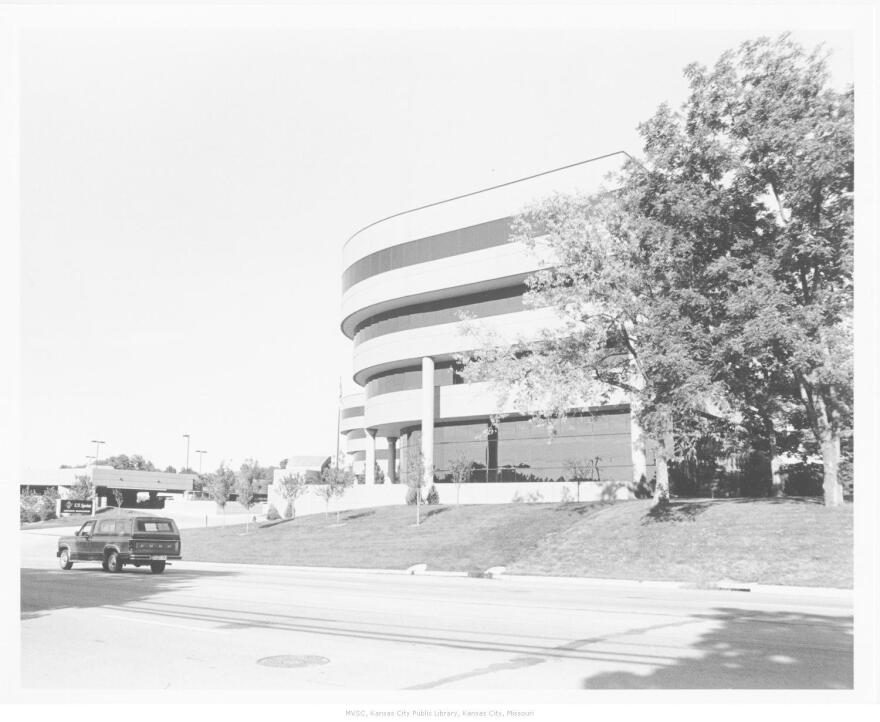The Sprint campus in Overland Park, Kansas, was inaugurated in the late 1990s. It's a collegial brick complex surrounded by lawns and trees, and built to house about 14,000 employees. Today, more than 6,000 Sprint workers occupy the company's headquarters, and some of the space is leased to other businesses.
The recent announcement of a Sprint merger with T-Mobile likely marks the end of an era. The merged company will be led by T-Mobile CEO John Legere. While we wait for what could be a profound change for the Kansas City metro, it’s as good a time as any to consider the various incarnations of a company that have made our city a national hub for telecommunications, driven the local economy and led the area in new patents.
Sprint's history goes back more than a century.
1899: Railroad roots
The mobile service company we now know as Sprint has its origins in two companies that operated in the early 19th century.
One was the Southern Pacific Railroad, which operated thousands of miles of telegraph wire on poles along its tracks so dispatchers could monitor trains and relay track conditions to locomotive engineers. Later, the same wires could be used for voice communications. The railroad operated its telephone system as an independent company, called the Southern Pacific Communications Corporation.

The other was Brown Telephone Company of Abilene, Kansas, founded in 1899. That company’s history was a rollercoaster. It declared bankruptcy in the early 1930s in the aftermath of Great Depression, and only six out of 85 subsidiary companies continued to operate. However, after its reorganization, the former Brown Telephone Company managed to get back on track under a new name: United Utilities.
In 1972, United Utilities changed its name to United Telecommunications and started operating its own long-distance telephone service.
1972: The name Sprint is born
By the late 1950s, the Southern Pacific and other railroads started to use radio systems, and wire lines were no longer economically viable. Instead of getting rid of the wires, in the mid-1970s Southern Pacific began selling time on its extensive microwave communications system to private customers. In 1972, the company chose a name for its long-distance phone operation: Sprint, which stood for Southern Pacific Railroad Internal Networking Telephony.
1982: Southern Pacific Railroad sells Sprint to GTE
According to a 1982 New York Times article, the Southern Pacific Railroad had cash-flow problems related to a $1.4 billion loan. So the railroad decided to sell its communication networks, including Sprint, to General Telephone & Electronics Corporation.
1986: Emergence of Sprint Corporation

In 1986, GTE merged with United Telecom as both companies were expanding their networks of fiber cables, a groundbreaking technology in communications.
At that time, Sprint was nation’s third-largest long-distance service, and United Telecom was the fourth. Three years later, United Telecom purchased a controlling interest in Sprint, and had completed its acquisition by 1991. The company was renamed the Sprint Corporation.
1990s: Going wireless
Sprint entered the market of wireless communications in 1993 by acquiring Chicago-based Centel, the 10th largest cellular company in the U.S., with operations in 22 states.
In 1996, Sprint forged a partnership with Radio Shack that allowed Sprint to sell its services and phones inside Radio Shack outlets.
Almost 20 years later, in 2015, Radio Shack filed for bankruptcy and shortly co-branded around 1,400 of its remaining stores with Sprint. Later, Radio Shack filed a lawsuit, claiming that Sprint took advantage of the partnership by using confidential data to pinpoint the best locations for its own retail stores.
1998: New headquarters in Overland Park
In the late 1990s, the company built its new headquarters in Overland Park. The a 3.9 million square-foot campus consisted of 17 buildings, parking structures, hiking and biking trails, and an amphitheater for 3,000 people. The campus has a capacity for 14,500 employees.
2004: Sprint Corporation and Nextel Communications
In 2004, Sprint Corporation and Nextel Communications merged to become the Sprint Nextel Corporation.

Sprint aimed to boost its number of subscribers from 20.1 million to 40 million in the deal with Nextel. But what looked like a win-win turned out to cost $37 billion in losses and millions of customers fleeing, according to Bloomberg Businessweek. The companies were using incompatible technologies.
In the end, Sprint had to support separate networks and sell different types of phones that worked with each. Sprint’s CEO Dan Hesse halted Nextel’s network and put the remaining resources towards rebuilding Sprint’s network.
2013: SoftBank Corporation comes to the rescue
Tokyo-based mobile phone company Softbank Corp. reached a deal to acquire 70 percent of Sprint Nextel for $20 billion in 2013. SoftBank planned to merge Sprint with T-Mobile to generate $30 billion or more in costs savings between the two companies. However, U.S. anti-trust regulators halted the proposal, preventing the two companies from bidding jointly on wireless spectrum. After the deal failed, the company’s CEO Dan Hesse was replaced by Marcelo Claure.
2014-18: Rounds of layoffs
After its failure to merge with T-Mobile, Sprint slashed $1.5 billion and 2,000 total employees in 2014. The next year, it fell to last place among national carriers. In 2016, Sprint Corp. fired another 800 employees as a part of the company's $2.5 billion plan to cut operating costs. Finally, the company announced it would cut 500 jobs from its Overland Park headquarters in 2018.

April 29, 2018: T-Mobile again
On April 29, T-Mobile and Sprint announced another attempt to merge, creating a company with 126 million customers. It would bring it closer to its rivals: AT&T with 141 million subscribers, and Verizon with 150 million.
The deal needs to be approved by Justice Department and the FCC. Kansas City is waiting to hear, too.
Anna Yakutenko is an Alfred Friendly Press Partners Fellow working at KCUR 89.3.



